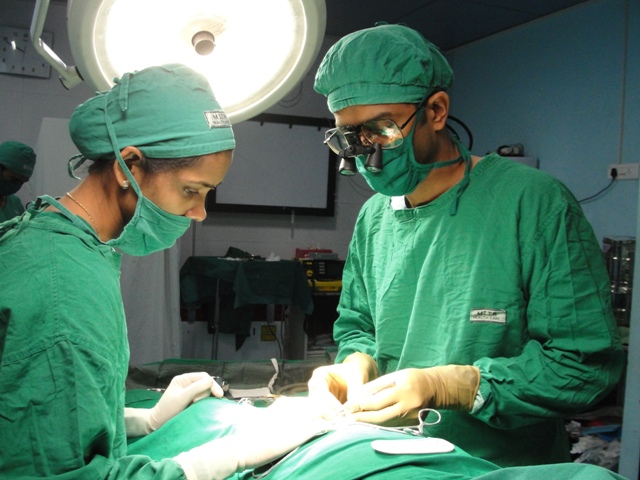
I did not know what was in store for me – there was 6 new patients in clinic and only 4 follow-ups and by the nature of it new patients take more time and follow-ups finish very fast. Anyway, the first patient who walked in was a 3 year old accompanied by young smart looking parents. The boy flashed a big smile and I said hello and he was eager to shake hands. That was a positive sign – Acceptance of me as a friend. Good so far.It was a nice Saturday evening, the watch clicked 7pm and I was in my Pediatric Urology clinic at Vashi with the last 10 urology appointments and was slated to be back home by 8pm.
Invariably on Saturdays I get late but today I was all energized to finish consultations fast and head back home for a quiet dinner and then catch up on much neglected sleep.
Then we got down to the business of consultation- the parents had looked up about hypospadias on internet and had found me and then travelled all the way to Navi Mumbai on a Saturday evening for a consultation for their little one who had hypospadias. I examined the eager and cooperative kid- he has a coronal hypospadias with mild tilt of glans (the head of penis). There was no chordee (actual bend of the body of penis) and testes were in normal location. Overall, it looked like a milder distal hypospadias which should be fairly easy to repair with a predictably good result.
I explained everything about hypospadias – how it happens and how it is repaired and then the QA began. The parents asked – “Is it necessary to repair it? We have heard that it can lead to long term urinary problems and sexual dysfunctions as sometimes the nerves get cut during sensation leading to a numb penis. Also, there are blogs which talk about no need to do surgery in distal hypospadias as there may be long term complications like hair growth, tight passage, fistulas etc.” They had visited an eminent Urologist who had advised against surgery.
Well, they had done their due research and it was good but sometimes the truth out there may not be whole truth. I had to counsel them and make sure that they know the whole truth while at the same time sounding detached from the whole process. It was after all their kid and their responsibility- my job was to give full, fair and medically sound information and then their job was to make the right decision for their kid.
So here are the facts as I discussed with them:
- As the boy grows and finally the penis size become adult like, the deformity becomes more and more obvious. The glans (penis head) which was tilted will look more and more abnormal.
- The prepuce will only be on the top of the head and not on the underside leading to an incomplete prepuce. It looks rather like the head of a cobra in adulthood
- The urinary opening will be on the underside of penis and the urine stream will always be downward instead of forward as in a normal child.
- The problems as stated above will be more cosmetic than functional but they affect the psyche as he will be able to see that the shape and configuration of his penis is quite different from that of other children. This can lead to deep seated emotional and social withdrawal issues in teenage and adulthood.
- Repairs are easier with predictable and better results in childhood. Later on in teenage and adulthood repairs have higher failure rates and pain. Further erections can cause pain and instability in the repaired area after surgery.
- The blogs out there contain stories of people who underwent surgery for hypospadias in childhood and now are adults. Thus the care which they received was 20-25 years back. The art & science of Hypospadiology has moved at much faster pace in last two decades and now- the understanding of anatomy of penis & hypospadias is much better, the surgical techniques have evolved and most of the repairs are done in single stage, new instruments for finer surgeries are available, new fine absorbable & non-reactive stitches are available and above all there are doctors who are well trained in managing the children with hypospadias.
- Earlier surgeries using skin from scrotum or other body tissues are not done any more so currently any repair causing hair growth in urethra is outdated and not done by surgeons.
- Complications like fistula, tight passage (stricture) are less than 5% in experienced, trained surgeons hands for milder distal hypospadias.
To sum up, it is worthwhile to repair distal hypospadias considering all the above. The science of hypospadias surgery has made sure that the children get the best results for surgery in their early childhood and then live their lives normal without worrying about their reproductive organs.
Contact Form for Hypospadias Foundation
Please fill all clinical details and upload pictures and clinical summaries (if available)
